Previously, we began our overview of the Kentucky Living Will Directive Act, the primary law in the Commonwealth governing living wills, a type of advance directive.
As we explained, a comprehensive estate plan includes not only careful planning for the disposition of property and money, but also thoughtful, considered instructions for medical providers and loved ones should the person become medically incapacitated and no longer able to make and communicate their healthcare decisions.
Basic provisions
The Act provides Kentuckians a living will form in which an adult – called the grantor – can:
- Name a health care surrogate, including co-surrogates and successor surrogates, authorized to make treatment decisions if the grantor loses their decisional capacity in the future
- Direct their surrogate and doctors in treatment decisions concerning providing, refusing, or ending life-sustaining medical treatments such as mechanical ventilators or kidney dialysis
- Instruct the surrogate and physicians whether and under what circumstances to provide artificial nutrition or hydration through a feeding tube or IV
- Designate whether to donate their organs
Before executing the form, it is smart to discuss these decisions with a doctor so that the grantor understands the range of treatment options as well as their pros and cons. A medical specialist can provide more specific information should the grantor face complexity due to an existing health problem.
The MOST form
The Act also directs the Kentucky Board of Medical Licensure (KBML), a state agency, to create a “medical order for scope of treatment” form (MOST form). The MOST form is normally used for a patient with advanced illness or frailty, usually in advanced years, to dictate decisions in their particular medical circumstances. The grantor should work closely with their treating doctor to make informed decisions should certain treatment decisions arise.
For example, the form has options for directing decisions such as:
- If the patient has no pulse and is not breathing, should medical professionals attempt cardiopulmonary resuscitation (CPR)?
- What level of medical intervention does the grantor want if a pulse is present or they are still breathing (full scope including life support, hospitalization, and intensive care; limited additional intervention including hospitalization avoiding intensive care, but no ventilation or intubation; or comfort measures only)?
- What level of antibiotic treatment is desired and for what purpose?
- Does the patient want IV fluids or medically administered nutrition and if so, long term or short?
Normally, a patient who still has decisional capacity initiates the MOST form, but if they have lost the ability to make and communicate medical decisions, other parties may be authorized to complete and sign it, such as a named surrogate, a guardian, and certain others.
The patient (or their health care surrogate or responsible party), the healthcare professional preparing the form, and the patient’s doctor must all sign. When properly executed, the form becomes a physician’s order for treatment and is portable to other health care settings.
If a MOST form conflicts with the person’s living will, the living will governs.
Takeaway
The living will and MOST form under the Act are legally and medically complicated, requiring the most serious kinds of personal decisions about life and death. In addition to close collaboration with treating medical professionals, consultation with an experienced estate planning attorney allows a Kentuckian to understand the range of related legal issues and thereby make informed decisions.

